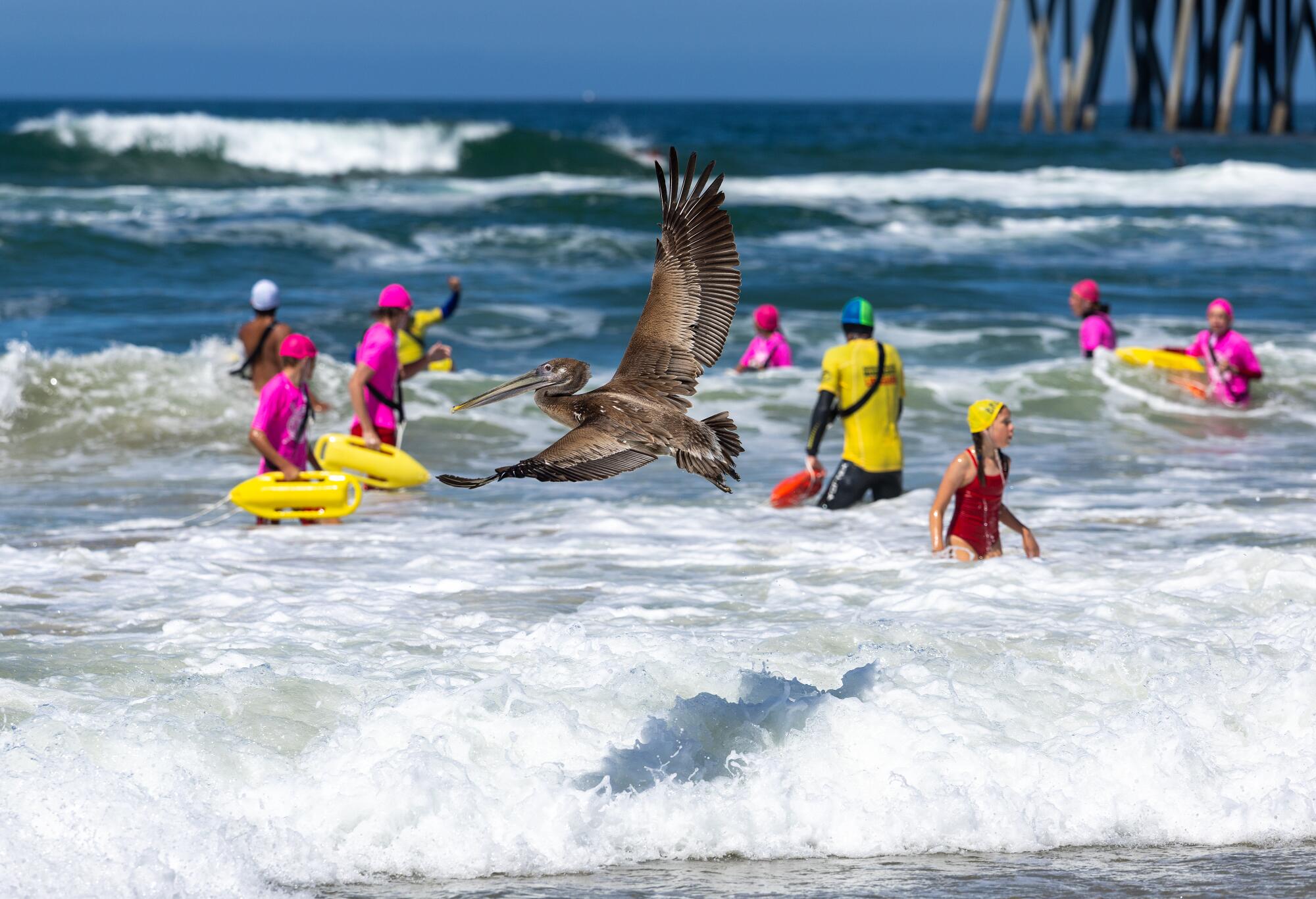-
Rock legend Ozzy Osbourne dead at 76 - 2 mins ago
-
Nearly 300 pounds of meth hidden in fake solar panels nabbed at LAX - 16 mins ago
-
This new air scanner could replace drug dogs at US borders - 34 mins ago
-
How to Watch Semifinal: England vs Italy: Live Stream UEFA Women’s Euro 2025, TV Channel - 37 mins ago
-
What are the 10 Biggest College Football Rivalries of All Time? - 40 mins ago
-
Ex-MLB pitcher sleeping with family nanny guns down in-laws amid financial struggles - about 1 hour ago
-
‘Miss Independent’ singer Kelly Clarkson says dating in spotlight is difficult - about 1 hour ago
-
Merrill Kelly Trade Expected, Surging Red Sox Tabbed ‘Best Fit’ - about 1 hour ago
-
Who is Jacob Misiorowski? Rookie All-Star Chats Pokémon, Card Collection - about 1 hour ago
-
Target says it’s ending its Amazon and Walmart price matching policy after a 12-year run - 2 hours ago
Poisoned pelicans fly again after deadly SoCal algal bloom
A flock of brown pelicans waddled back into the wild on Wednesday morning, survivors of Southern California’s latest toxic algal bloom. This year’s bloom was the deadliest such event since 2015, when thousands of animals were killed along a coastal swath stretching from Central California to Alaska.
This year’s intense bloom, which started in January, poisoned the 13 pelicans and many other sea animals in the region, including sea lions that sometimes threatened beachgoers. The pelicans that took off Wednesday had made a full recovery at the Wetlands and Wildlife Care Center in Huntington Beach.
One of the rehabilitated pelicans flies near the Huntington Beach Pier.
(Allen J. Schaben / Los Angeles Times)
The release was held just south of the pier, with community members invited to watch.
“This is always a special moment — not just for our team and volunteers who worked tirelessly to save these birds, but for the community as well,” said Debbie McGuire, executive director of the wildlife nonprofit. “Watching them take flight is a powerful reminder of why our work matters.”
Huntington Beach junior lifeguards volunteered at the event, according to a news release from the center, unzipping the cages on the beach to allow the birds to waddle out to shore.

Junior lifeguards take part in a pier swim as the birds are released on Wednesday.
(Allen J. Schaben / Los Angeles Times)
The event was mostly successful, according to Jaratt Dazey, the volunteer coordinator for the wildlife group. After the birds were released, most of them took flight — but two remained on the sand. The pair were taken back to the center’s veterinary facilities for more treatment, Dazey said.
“Overall, though, the release went well,” he said. “They came out of the cages, they sat on the sand for a few minutes, and they all took off and flew together.”
The 13 pelicans had been poisoned by domoic acid, a toxin that occurs in algal blooms, which fish can consume. Marine animals can then become poisoned if they eat the contaminated fish, causing abnormal behaviors and seizures, Dazey said.

The birds released Wednesday were among about 200 treated by the Wetlands and Wildlife Care Center in Huntington Beach during the recent algal bloom.
(Allen J. Schaben / Los Angeles Times)
This is the fourth year that a dangerous algal bloom has occurred in Southern California, but this year’s was especially threatening, as the Los Angeles Times previously reported.
A number of sickened sea lions were reported, with one surfer encountering one that he called “feral, almost demonic.” The Marine Mammal Care Center in San Pedro reported at the end of May a possible end to “the longest, most toxic, and deadliest bloom we’ve ever experienced.”
The Wetlands and Wildlife Care Center rescued nearly 200 seabirds in total, which Dazey said was an abnormally large number.
Levels of toxic algae along the coast of Southern California had begun to decline by early June.
The toxic algae blooms can be caused by water and wind patterns as well as an overproduction of nutrients in the water, which can “overfeed” algae colonies and lead them to grow out of control, according to the National Ocean Service.
The effects of climate change can also make algal blooms more frequent and more severe, according to the U.S. Environmental Protection Agency. Warmer water temperatures and higher carbon dioxide levels make the perfect habitat for algae breeding. Varying rainfall patterns and coastal upwelling both lead to more nutrient-dense waters, which only encourages algae growth.
Source link




























